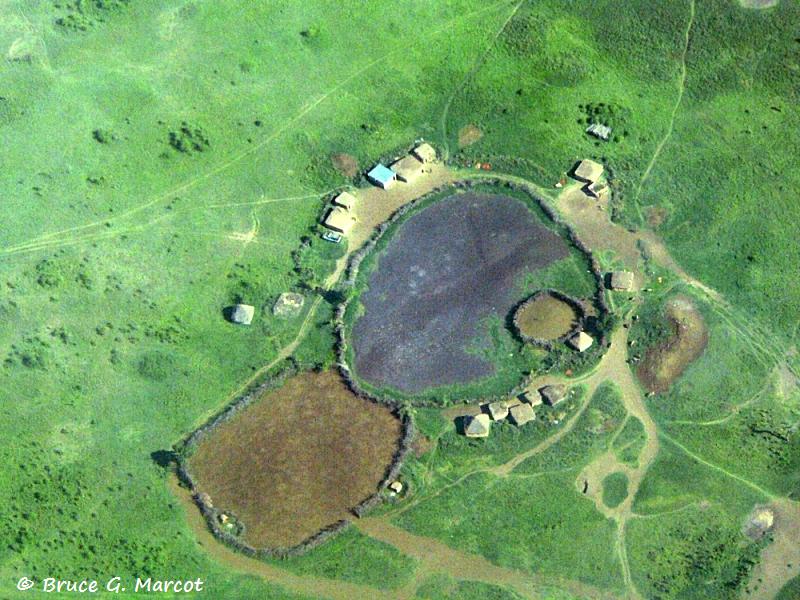
|
|
Maasai Manyattas of the Mara |
|
|
Click on images for larger versions
|
Maasai village, Maasai Mara, Kenya |
Credit & Copyright: Dr. Bruce G. Marcot
Explanation: This is a landscape harsh and dangerous. Resources are sparse despite the greenery, and large predators emerge at dark in search of easy prey. This is the Maasai Mara of southern Kenya, the northern part of the immense Serengeti savanna extending south into Tanzania. And these are villages of the Maasai, a Nilotic group of tribes living in communal systems of resource-sharing.
Maasai villages are sometimes referred to as manyattas, although that term is also used to refer to huts occupied by circumcised young men. Maasai villages typically include kraals -- prominently featured in this weeks photos -- which are circular hedgerows of thorny acacias that serve the purpose of keeping out lions and other large roaming predators and wild ungulates, safeguarding the precious livestock shared by the villagers.
This is social evolution of community life at its finest, in a land at its harshest.
Scroll down to view a variety of styles and architectures of Maasai manyattas on the Mara.
This manyatta -- huts on the left -- is set in a more shrub-dominated landscape,
and may be part of a system of rotating grazing areas, currently being fallow.
Note the typical criss-cross of footpaths and travelways
created by moving livestock in orchestrated rotational cycles
that prevent the grasslands from becoming overgrazed.
Kraals -- the circular thorn fences -- are often shared by extended
family groups, but some are occupied by only a single family.
Here is seen a system of kraals forming a village community.
As livestock are kept safe from predators within the kraals,
outside, villagers are exposed to the dangers.
In this village, a kraal also protects the houses.
Here is yet another design, with kraals within kraals.
I saw few square kraals, an interesting contrast to the more
organic circular-shaped examples.
Like a double-planetary system sharing a small moon is this Maasai village.
And it struck me how many manyattas were built more for access to
grazing pasture lands than to rivers and open water sources.
The Maasai are semi-migratory, rotating grazing areas to keep them productive.
Tough life, indeed. The Maasai are amazing people
from whom we all can learn much, for managing our
own world of increasing resource scarcity.
Next week's picture:
Gray-breasted Seed-snipe
< Previous ... | Archive |
Index |
Location | Search | About EPOW | ... Next >
|
|
Author & Webmaster: Dr.
Bruce G. Marcot
Disclaimers and Legal
Statements
Original material on Ecology Picture of the Week ©
Bruce G. Marcot
Member Theme of The Plexus